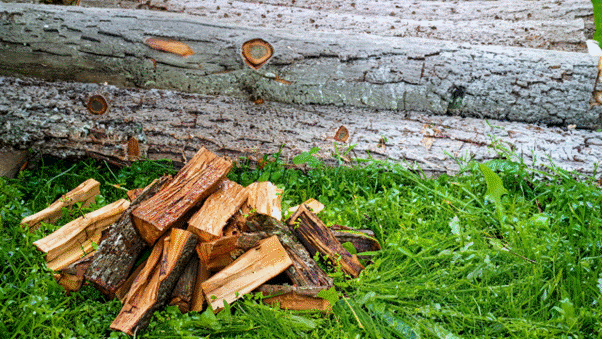
There’s a common misconception when it comes to burning wet wood (also sometimes called unseasoned wood). Many people think that burning wood which is wet isn’t much of a big deal as it’ll soon dry out in the heat of the flames. However, there are some huge differences between burning wet wood and burning dry wood. In this article, we’ll dive into the details and clear things up regarding the key differences that you should be aware of.
The problem with burning wet wood
There are multiple reasons why burning wet wood should be avoided for both infrequent users who occasionally burn wood and regular users of a wood burning stove. These reasons range from the health and environmental impacts it can have to the negative impact it can have on your log burner and chimney/flue.
Health impacts of burning wet wood
Burning wet wood produces more smoke and releases harmful particulates into the air that you and those around you end up breathing in. As wet wood burns it can exacerbate existing health conditions such as asthma, leading to shortness of breath as well as coughing and general discomfort.
Carbon monoxide is also more of a threat when burning wet or green wood as a wood fuel. This is due to increased oxygen depletion and reduced oxygen levels in the combustion process brought on by the presence of water vapour. Whether you are burning wet firewood or burning dry wood, you should ensure you have a Carbon monoxide alarm that you regularly test to ensure your safety.
An increased build-up of creosote can also pose a threat to your health. As this is toxic, it can lead to breathing issues, eye irritation, and worse if you have a large build-up that you are regularly exposed to. This is why it is so important to regularly maintain your chimney or flue, and also burn the correct types of dry wood in the correct types of stoves.
Environmental impacts of burning wet wood
Wet or green wood is worse for the environment than dry wood because it can produce harmful pollutants and small particles into the air in addition to more smoke. We advise all of our customers to use dry wood with a moisture content below 20% (as verified by a wood moisture meter) used in conjunction with a modern Ecodesign / Clear Skies certified stove.
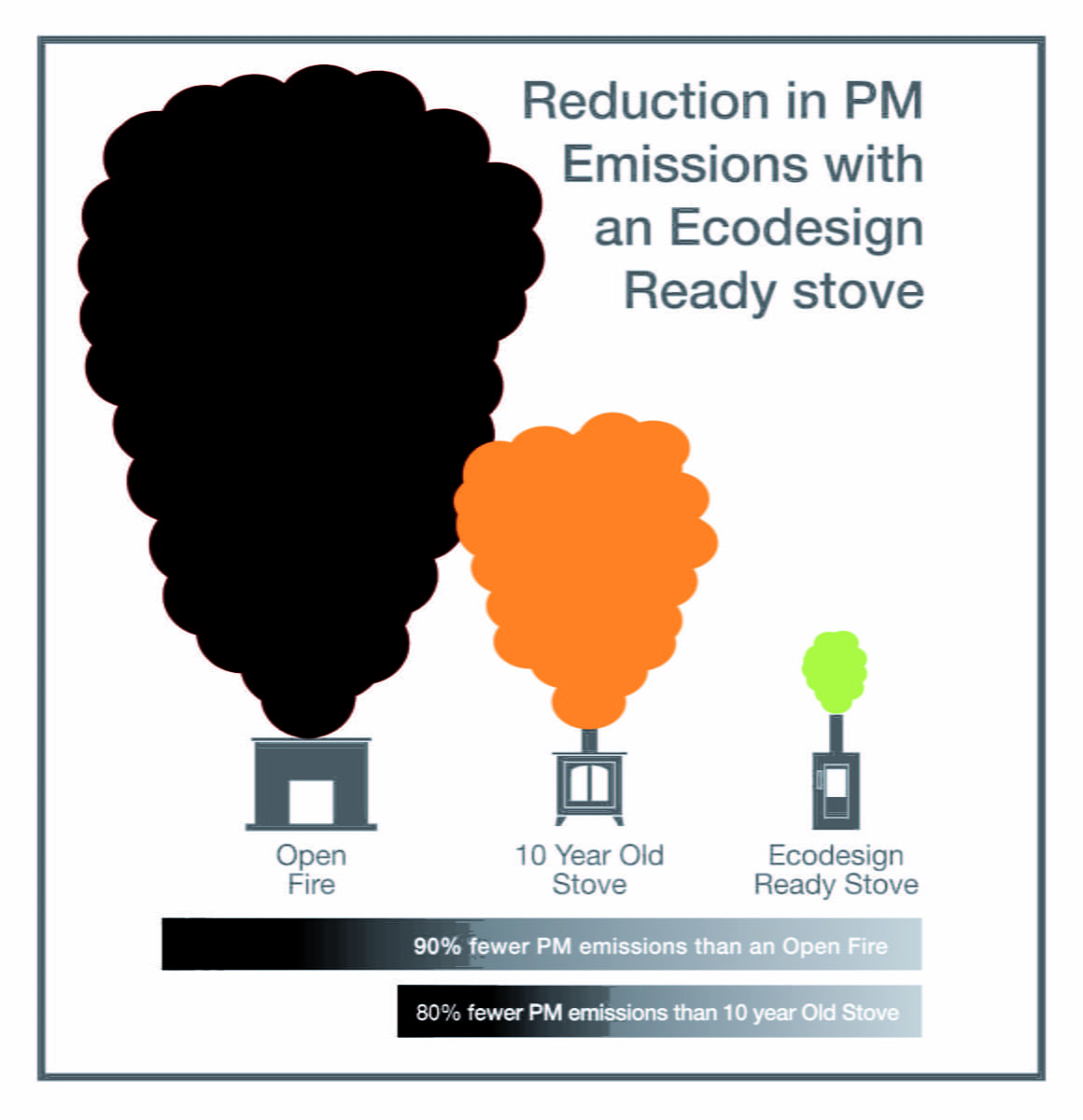
Wood burning stoves reduced PM emissions
Using kiln dried or seasoned wood in conjunction with a Clear Skies certified stove makes a huge difference in reducing the amount of particulate matter generated, producing significantly lower PM2.5 emissions than an old stove, or open fire.
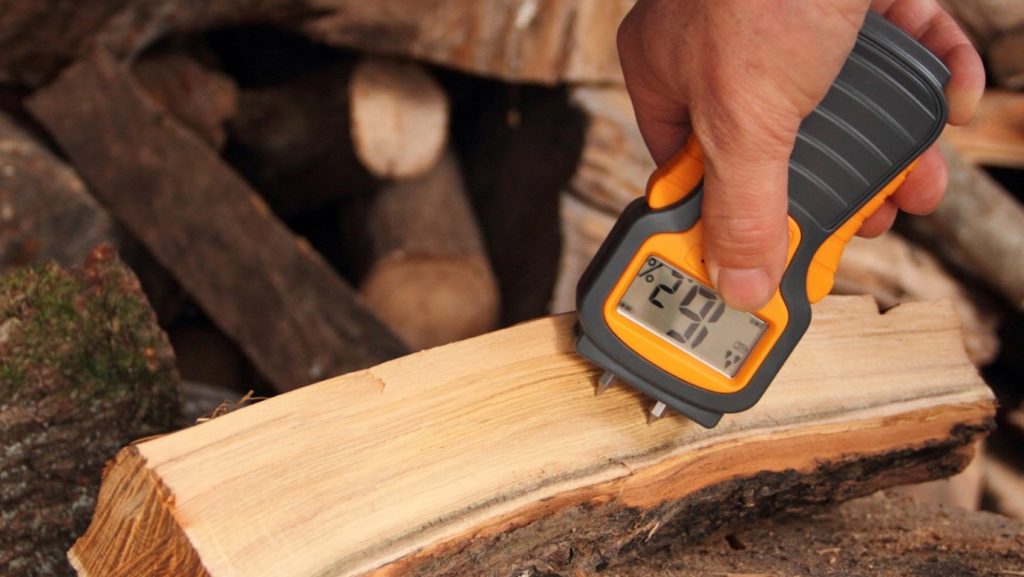
You can ensure the moisture content of your firewood is less than 20% by using a moisture meter.
Reduced efficiency of wet wood
It is bad to burn wet wood for the environment and your health, but it’s also terrible for generating heat and burning. This is one of the adverse consequences of burning your own firewood, perhaps recently felled from local woods that you burn immediately (this is probably illegal too).
Wet firewood will burn poorly and need refilling more frequently as it burns quicker in addition to giving off reduced heat output. You’ll probably get more warmth from the effort it takes to keep on top of feeding the fire! There’s also the difficulty of lighting the fire and keeping it going for a sufficient amount of time. Using wet or green wood is a headache worth avoiding which is why using logs with low moisture content is so important.
How burning wet wood affects your stove and flue
Burning wet firewood can also have a detrimental effect on your stove (particularly stove glass), flue, or chimney. As burning green or wet wood produces more smoke and creosote, this accumulates faster in your flue or chimney requiring constant attention and could potentially end up becoming a health and safety hazard. This is due to a build-up of creosote restricting airflow resulting in a CO hazard, or even a flue fire that can easily spread throughout your house. This could also cause a chimney fire.
Dry wood vs wet wood — key differences
Check out the table below to see some quick differences between wet/green wood, and kiln dry wood. This could also be considered as a seasoned wood vs unseasoned wood analysis.
| Wet Wood | Kiln Dried Wood | |
| Moisture Content | High (Over 20%) | Low (below 20%) |
| Ignition Time | Longer, may need extra kindling. Hard to light | Shorter, ignites more easily |
| Heat Output | Lower as energy is used to evaporate moisture | Higher, more efficient |
| Smoke and Residue | Releases creosote and air pollution, smoke, and more particulate matter. Bad for health. | Less, cleaner burn with minimal residue |
| Efficiency | Lower due to energy loss via evaporation of moisture | Higher, more heat produced per unit of wood |
| Combustion | Inefficient combustion, more soot | More complete combustion, less soot |
| Storage and Handling | Requires drying time before use | Ready to use immediately, easier to store |
| Environmental Impact | Higher emissions, less eco-friendly | Lower emissions, more environmentally friendly (particularly when combined with using modern stoves) |
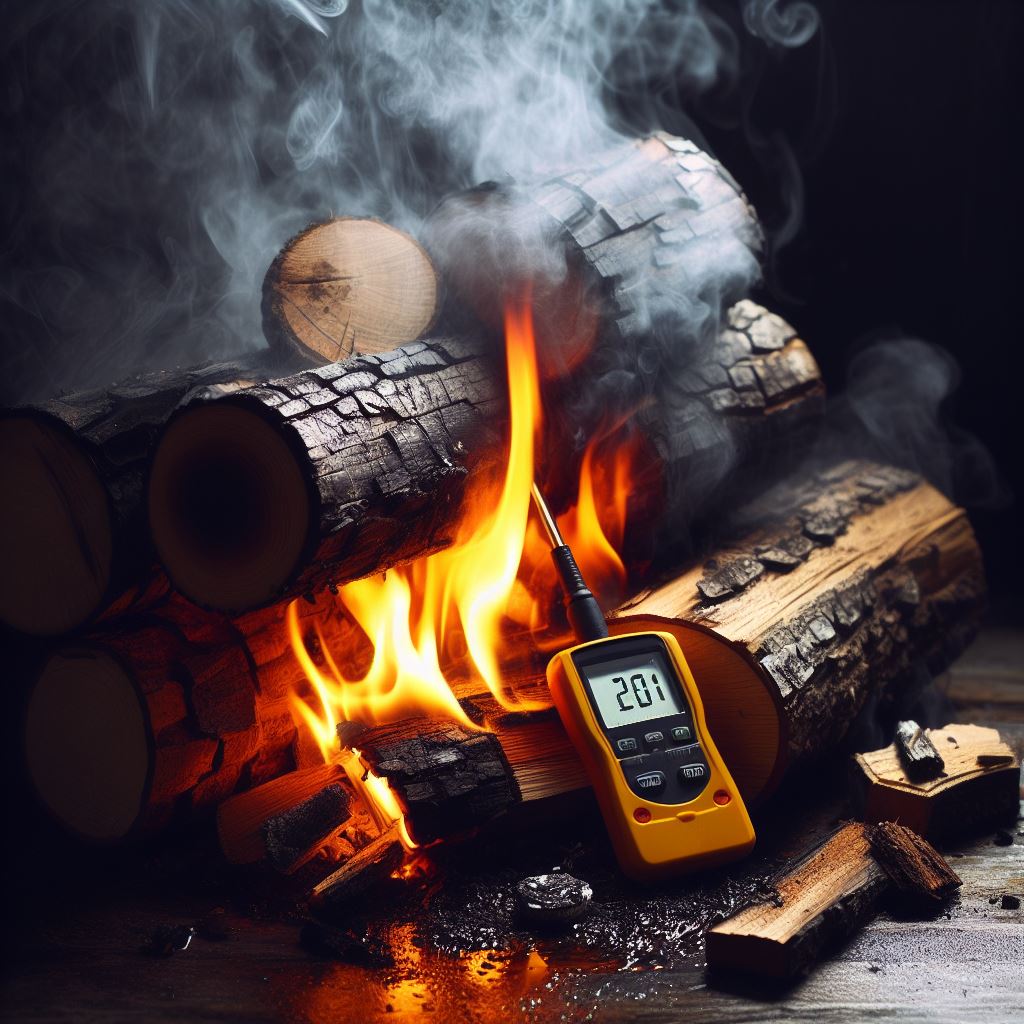
Burning wet wood should be avoided for many reasons
Air dry vs kiln dry wood
So, at this point we can hopefully all agree that burning wet/green wood is bad and to be avoided at all costs. But what about air-dried wood? Should we always be insistent on using kiln dried wood, or can we also burn air-dried wood while enjoying the same benefits?
There are a few key differences between air dry vs kiln dried firewood, let’s take a look at the key differences.
Air dried firewood
- Environmental concerns – dependent on weather and storage environment
- Infestation risk – can still contain bugs and mould
- Needs time to air dry – can take as long as 16 months to dry out
- Varied heat output – due to less drying control
Kiln dried firewood
- Can be provided all year – not reliant on weather conditions
- Can be quickly dried – with full control over the drying process
- Low moisture level – can guarantee the moisture content level (below or around 20% target)
- No bugs or mould – due to the drying process
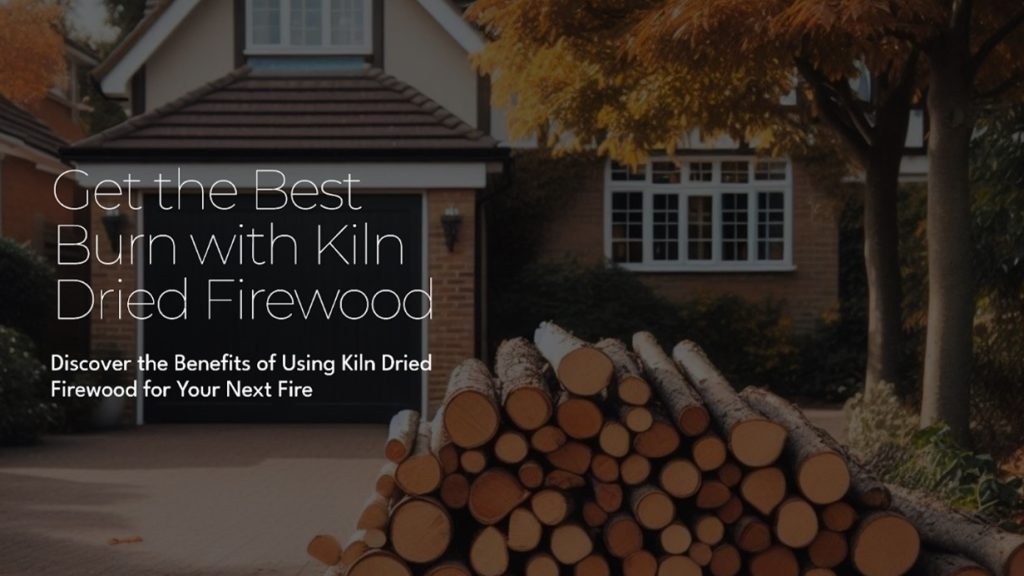
Get the best burn with kiln dried firewood
Using dry wood for burning — our top tips
Now you know to avoid green and wet wood, we can focus on maximising the benefits you gain when you burn dry wood.
Firstly, we recommend choosing kiln dried wood due to the control over the moisture content that the process gives us, and the fact it can be purchased all year round regardless of the weather conditions. There are many other benefits of using kiln dried firewood which can be found in a separate article that we’ve written recently.
Choosing your dry firewood
There are many different types of wood to choose from when buying kiln dried logs. At Cozilogs, we sell oak, ash, hornbeam, alder, beech, birch, and mixed logs. Each of these options has its own unique qualities such as distinctive aromas, visual spark, burn time, and those best suited for cooking. Always look for Ready to Burn mark certified wood, all the firewood we sell at Cozilogs has this accreditation. You should first focus on how you’re going to be using your wood, and then move on to the next step.
Choosing the quantity of kiln dried wood
As with the types of wood on offer, we also give customers a lot of choice when it comes to the quantity of firewood on sale. Bags, nets, and crates are all very popular options — each with its own benefits. As the colder months are now upon us, we always recommend that customers stock up on firewood in bulk in order to ensure they have enough to see them through the Winter. Any excess that is left over can be used throughout the warmer months at outdoor gatherings, BBQs, in Chimeneas, or even used to cook marshmallows over a campfire!
Many customers choose to buy in bulk and include a pack of firelighters which can be added on top of the pallet for free mainland UK delivery.
Choosing the right wood burning stove
As we touched on earlier, modern ecodesign stoves certified by ClearSkies are much more efficient than open fires and older stoves. The importance of using the right stove can’t be overstated — they are much better for the environment and are more efficient, saving your wallet and the planet!
Look for the ClearSkies badge or visit a UK stove company such as Burley Appliances, which produce some of the most efficient and cleanest wood burning stoves available — even exceeding ecodesign and ClearSkies standards.
You should ensure that you regularly book your sweep for maintenance and cleaning. Also, it is essential to fit a CO alarm and test it regularly (as frequently as once a week).
Conclusion
There is a huge difference in the amount of PM2.5 emissions generated by old stoves and open fires compared to that of burning kiln dried wood in modern stoves. With that being said, it is still essential to ensure that the wood you are burning is correctly seasoned and is free from chemicals and excess moisture. That is why buying from a company like ours saves customers from having to worry as all of our wood is free from chemicals, safe for cooking, and has a guaranteed moisture reading of less than 20%.
Using dry firewood for burning that is sustainably sourced has huge benefits that are worth repeating when used in an ecodesign stove:
- Better for the environment
- Significantly less creosote and smoke
- Free from chemicals
- Better heat output
- Easier to light
- Affordable heating
For anything else relating to firewood or the kiln drying process, visit our blog which is packed full of useful guides and tips!
Contacting Cozilogs
We hope you have enjoyed our analysis of air dry vs kiln dry wood and understand the benefits of dry firewood following our dry wood vs wet wood analysis. Buy dry wood for burning online, which is Ready to Burn accredited at Cozilogs in just a few clicks using our secure eCommerce system.
These are all sustainably sourced from UK forests and woodlands. To discuss our wood fuel range further, contact us at (01905) 954 736. Alternatively, email us via our contact us page using our contact form.
